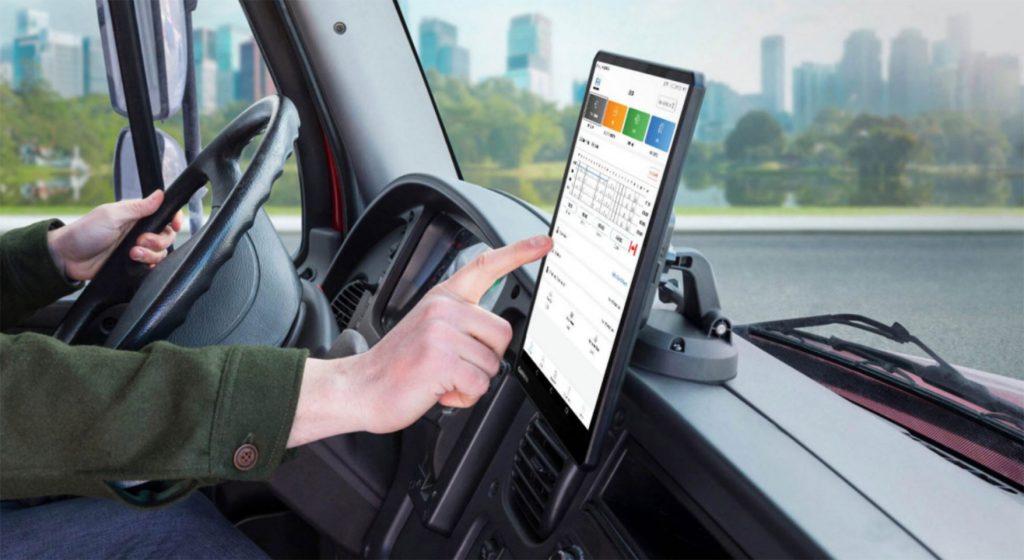

Close

We all know that feeling right after work driving on the highway back home. Or that feeling when you drive across town to see your friends and family in a different area. The drowsiness sets in, the highway traffic just rushes past us and there’s just something so hypnotic about those passing street lights and we doze off …
We try our best to keep ourselves awake. Talking to the person next to you, blasting music, or even just pinching yourself and somehow you make it to your destination. But truck drivers aren’t as lucky. Driving a large vehicle such as a truck requires special attention and that mentally drains truck drivers when they stay on the road for most of the time. Combined with lack of rest, inconsistent schedules and long drives on the highways, driver fatigue is something most truck drivers are familiar with. While driving these 40 ton trucks around with driver fatigue, it’s dangerous to everyone on the highway, including to the driver himself.
Fleet managers can be alerted of driver fatigue by observing a few telltale signs among their drivers. Educating drivers of these fatigue symptoms also help increase awareness of the problem, encouraging drivers to stop, rest and reassess before going on with their journey.
» Excessive yawning
» Over blinking
» Burning or heavy eyelids
» Slow reaction time
» Loss of concentration
» Erratic lane changes
» Missing exits on the highway
» Memory Lapses or forgetfulness
According to the Canadian Association of Chiefs of Police report, 20% of fatal collisions are caused by drowsy drivers. Other than that, being awake for more than 10 hours can impair driving as much as a blood alcohol concentration of 0.05%. Being awake for 24 hours is equivalent to a BAC of 0.10%. With the legal limit in Canada being 0.08%, fatigued driving is clearly a dangerous situation for drivers to be in.
The obvious answer to this question is to get adequate and enough rest whenever you get the chance to. But life doesn’t always run smoothly for us. By using dash cameras, fleet managers can spot driving fatigue symptoms and alert drivers of their behavior and their status.
1. Taking regular breaks.
Driving for long periods of time is mentally draining and contributes to driver’s fatigue. Drivers are recommended to take breaks every 2 hours which helps with staying alert on the road.
2. Eating small healthy meals and drinking water
Do you ever feel drowsy after a big dinner or right after lunch? That’s because our body needs energy to digest meals. Sugary snacks and high fat meals also contribute to long term energy level problems. Drinking enough water helps the body get rid of waste buildup in your body that makes you feel sleepy as well.
3. Limit caffeine intake
As counterproductive as it may sound, uncontrolled caffeine intake actually makes it easier for you to feel tired when you drive. Many experience a caffeine crash when they take in too much caffeine so it’s wise to drink coffee or caffeinated products unless you really have to.

Other than things a driver can do to combat driver fatigue, fleet managers can also use telematics to help combat fatigue. Dash cameras provide a live view of the road and the cabin, allowing fleet managers to notice signs of fatigue as well as signs of dangers on the road such as harsh braking and eccentric driving behaviors. Other than that, monitoring driver behavior through telematics may help fleet managers assess whether more drivers are needed for the fleet as well as rescheduling to ensure drivers in the fleet get ample rest for the road. Fleet managers can also set up reminders for the drivers to take a rest and monitor resting times to ensure that drivers are taking their time to refuel and re-energize themselves.
With the help of telematics such as dash cameras and ELD solutions, fleet managers can identify driver fatigue before it develops into an irreversible accident. Keeping information using telematics will also help managers devise plans and actions to preemptively stop drivers fatigue and combat them as it presents itself, keeping drivers well rested and safe on the roads at all times.